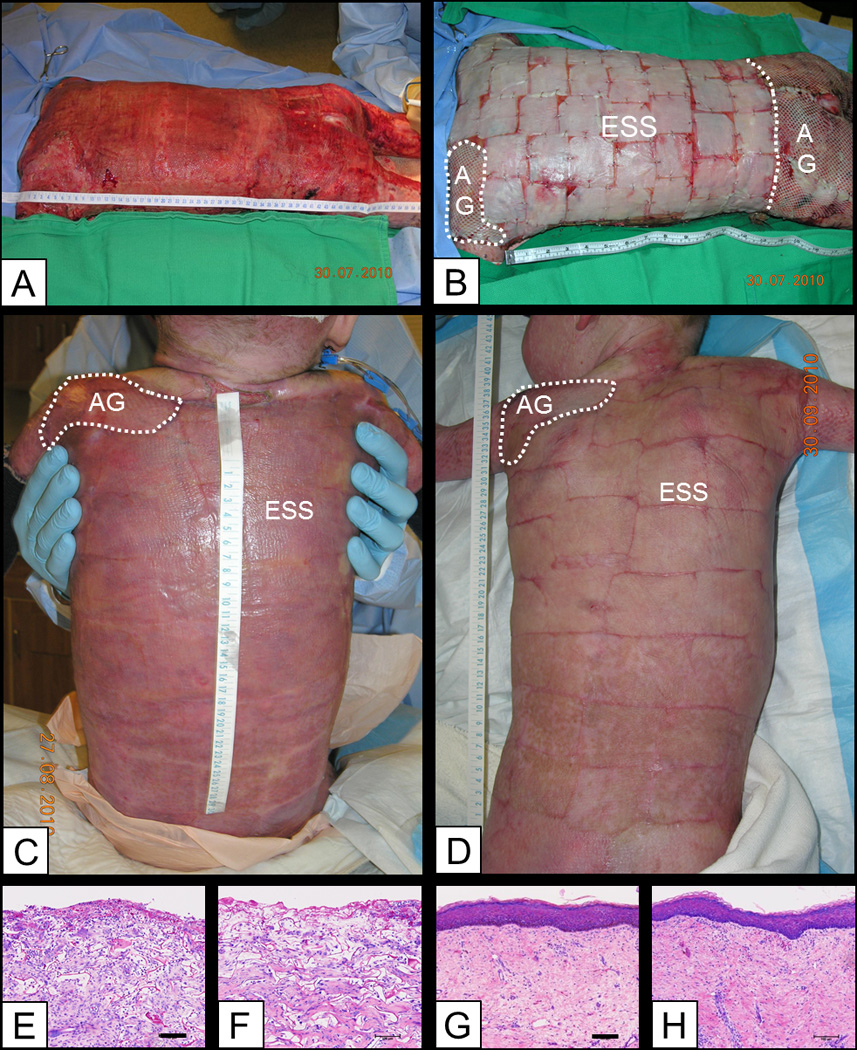Figure 2.

Clinical observations from surgical application of ESS and AG to a single subject through post-operative day (POD) 62. A) Prepared wound bed consisting of Integra Dermal Regeneration Template. B) Surgical application of engineered skin substitutes (ESS) and autograft (AG) comparative site. C) POD 28. D) POD 62 shows areas treated with split-thickness autograft (left shoulder), or ESS. Scales in cm. E, F) Wound beds for ESS (E) and AG (F) showed development of fibro-vascular tissue into reticulations of Integra Dermal Regeneration Template. G, H) At POD 105, ESS (G) showed a vascularized connective tissue component with orthogonal collagen fibers, and a stratified epidermis with a relatively flat dermal-epidermal junction. Similarly, the connective tissue component of AG (H) was well vascularized with a fully-stratified epidermis and a relatively flat dermal-epidermal junction. Scale bar = 0.1 mm.
